Abstract
The experience gained in the investigation of 100 cases of cardiac surgery treated by use of extracorporeal circulation has shown that certain simple laboratory tests suffice to detect induced defects in the blood and to guide therapy. These tests have been devised to detect the level of circulating heparin during perfusion; the presence of residual heparin following perfusion; the existence of a qualitative or quantitative fibrinogen deficiency; excessive fibrinolysis. Any of the latter three abnormalities alone or together have caused excessive immediate post-operative blood loss. Specific therapy has not been found to be necessary unless severe bleeding occurs.
Full text
PDF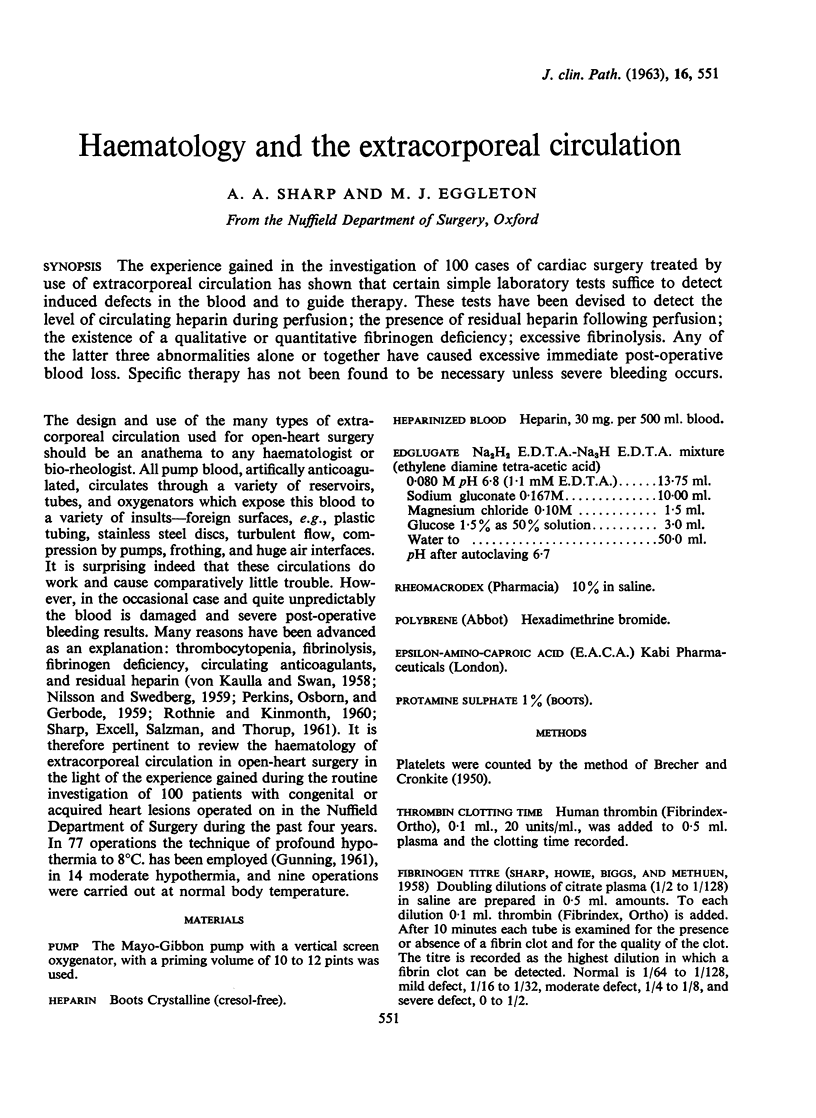
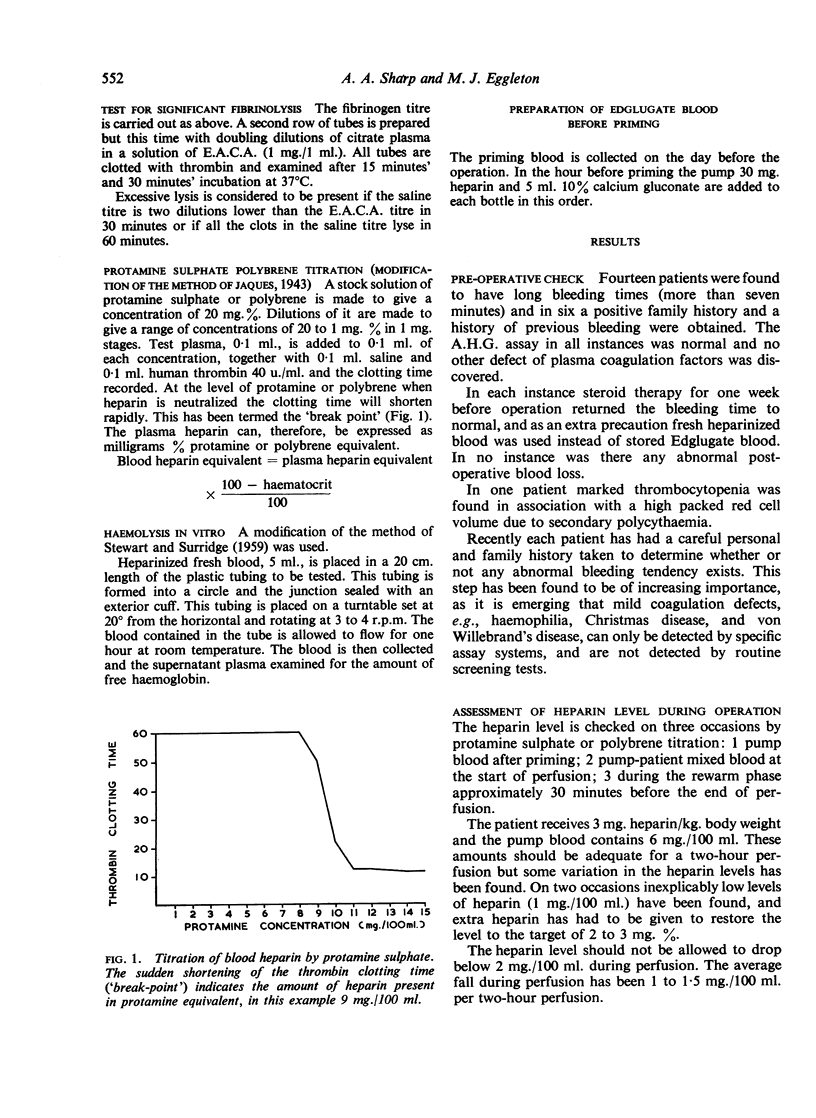
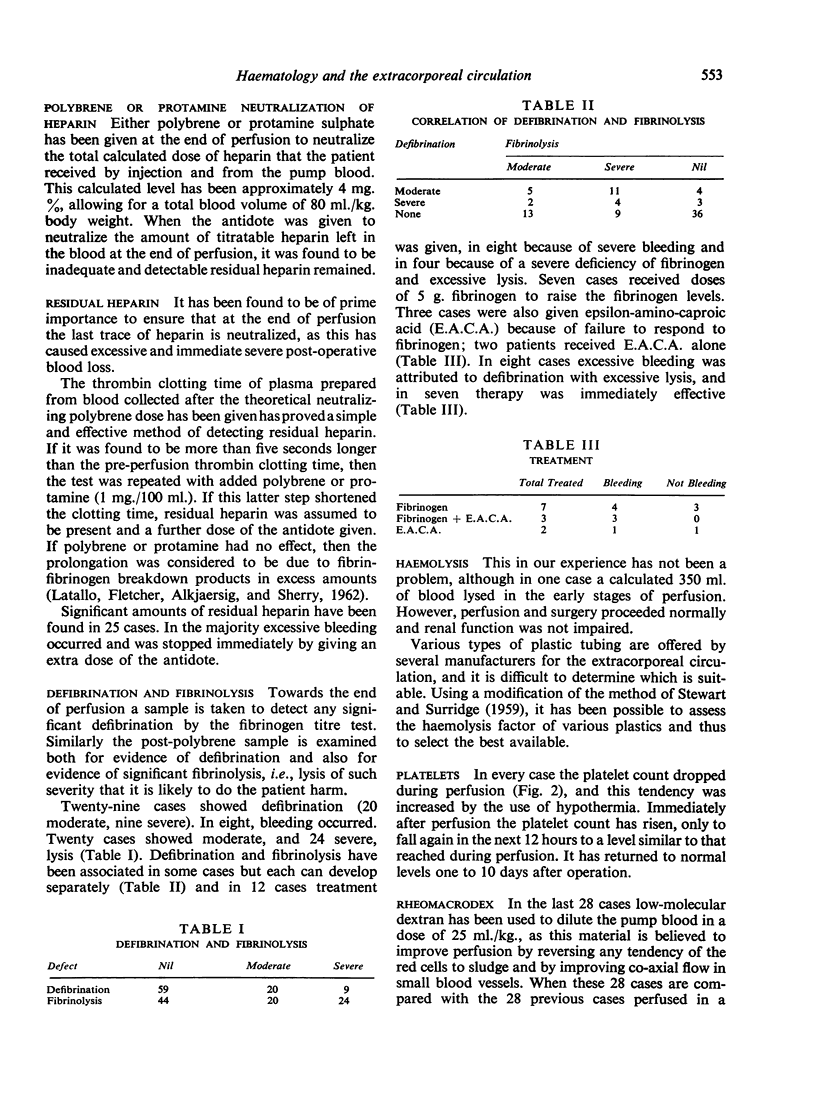
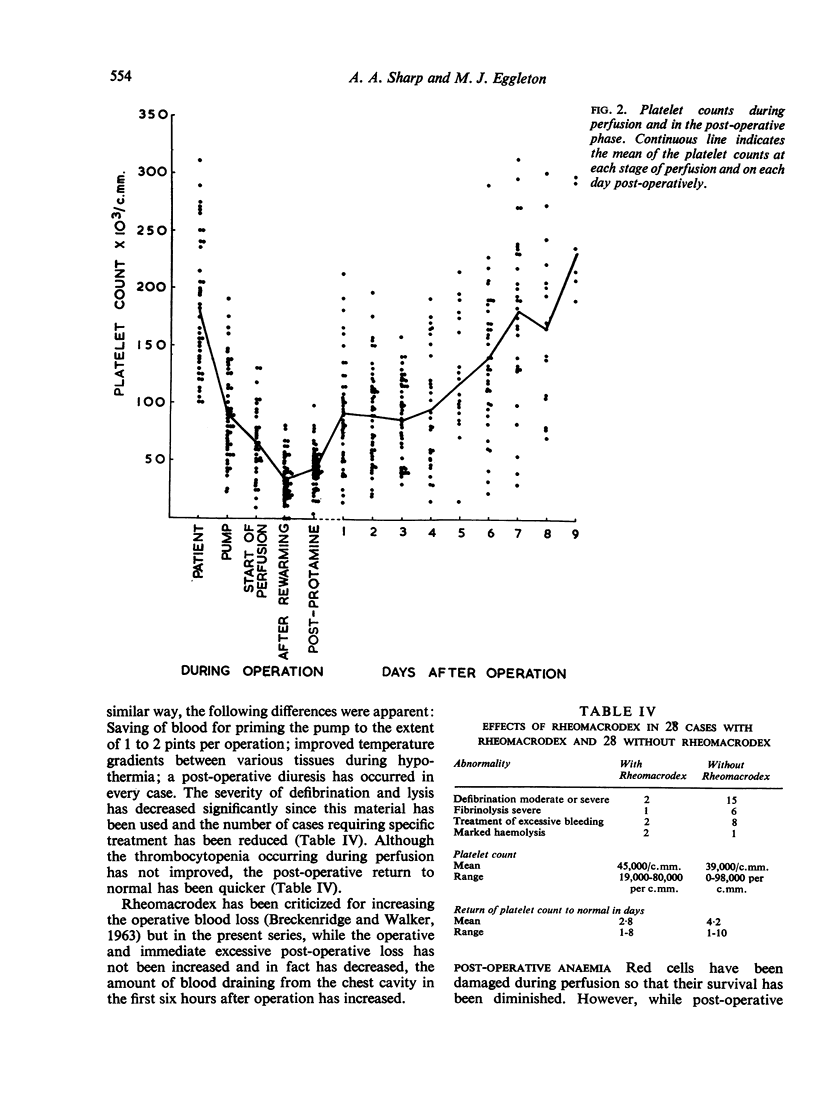
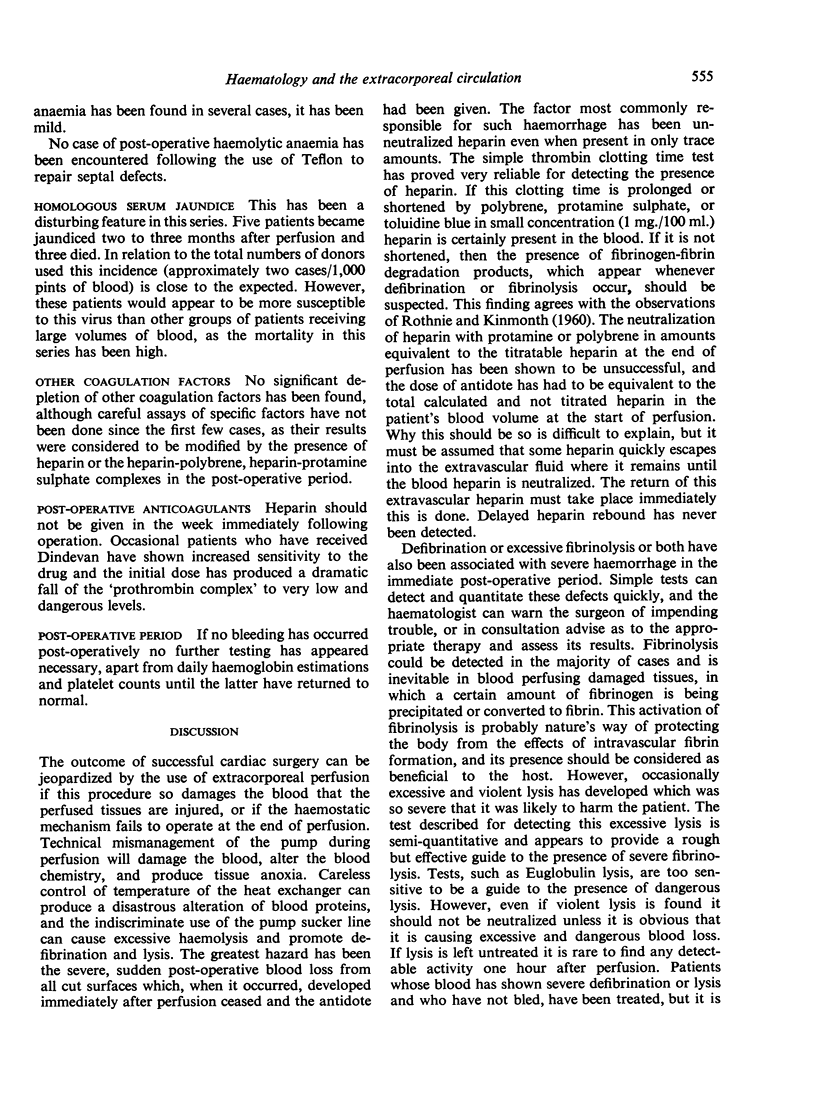
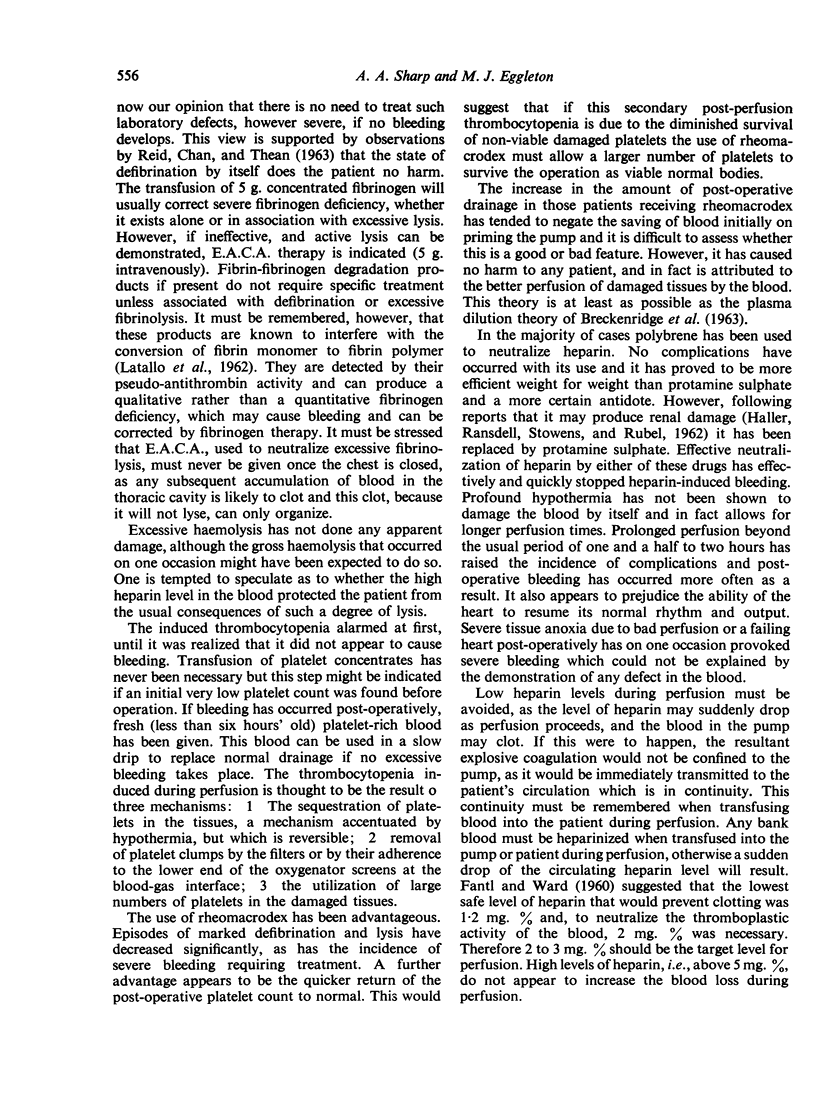
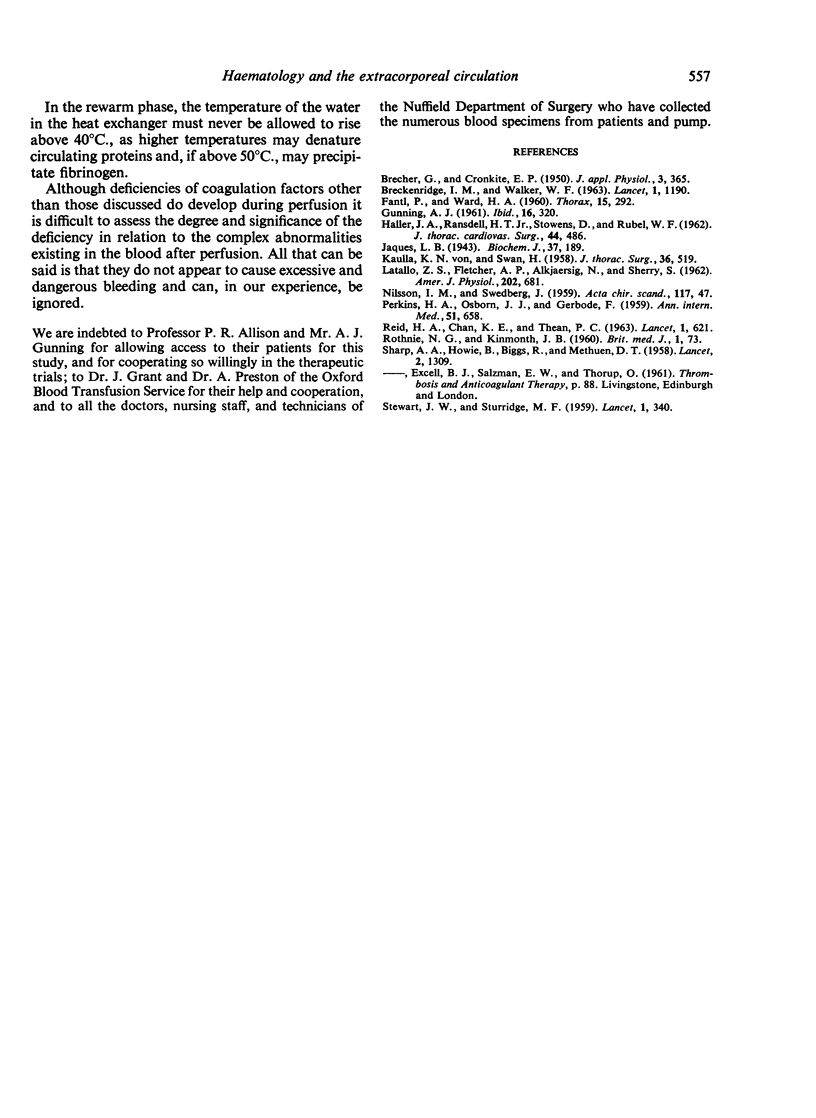
Selected References
These references are in PubMed. This may not be the complete list of references from this article.
- BRECHER G., CRONKITE E. P. Morphology and enumeration of human blood platelets. J Appl Physiol. 1950 Dec;3(6):365–377. doi: 10.1152/jappl.1950.3.6.365. [DOI] [PubMed] [Google Scholar]
- BRECKENRIDGE I. M., WALKER W. F. Blood-loss in open-heart surgery with low-molecular-weight dextran. Lancet. 1963 Jun 1;1(7292):1190–1191. doi: 10.1016/s0140-6736(63)92484-x. [DOI] [PubMed] [Google Scholar]
- FANTL P., WARD H. A. Blood coagulation problems in openheart surgery. Thorax. 1960 Dec;15:292–298. doi: 10.1136/thx.15.4.292. [DOI] [PMC free article] [PubMed] [Google Scholar]
- GUNNING A. J. A technique for the combination of profound hypothermia and extracorporeal circulation with complete circulatory arrest. Thorax. 1961 Dec;16:320–324. doi: 10.1136/thx.16.4.320. [DOI] [PMC free article] [PubMed] [Google Scholar]
- Jaques L. B. The reaction of heparin with proteins and complex bases. Biochem J. 1943 Jul;37(2):189–195. doi: 10.1042/bj0370189. [DOI] [PMC free article] [PubMed] [Google Scholar]
- LATALLO Z. S., FLETCHER A. P., ALKJAERSIG N., SHERRY S. Inhibition of fibrin polymerization by fibrinogen proteolysis products. Am J Physiol. 1962 Apr;202:681–686. doi: 10.1152/ajplegacy.1962.202.4.681. [DOI] [PubMed] [Google Scholar]
- NILSSON I. M., SWEDBERG J. Coagulation studies in cardiac surgery with extracorporeal circulation using a bubble-oxygenator. Acta Chir Scand. 1959 May 31;117(1-2):47–54. [PubMed] [Google Scholar]
- PERKINS H. A., OSBORN J. J., GERBODE F. The management of abnormal bleeding following extracorporeal circulation. Ann Intern Med. 1959 Oct;51:658–667. doi: 10.7326/0003-4819-51-4-658. [DOI] [PubMed] [Google Scholar]
- REID H. A., CHAN K. E., THEAN P. C. Prolonged coagulation defect (defibrination syndrome) in Malayan viper bite. Lancet. 1963 Mar 23;1(7282):621–626. doi: 10.1016/s0140-6736(63)91269-8. [DOI] [PubMed] [Google Scholar]
- ROTHNIE N. G., KINMONTH J. B. Bleeding after perfusion for open heart surgery. Importance of unneutralized heparin and its proper correction. Br Med J. 1960 Jan 9;1(5166):73–78. doi: 10.1136/bmj.1.5166.73. [DOI] [PMC free article] [PubMed] [Google Scholar]
- SHARP A. A., HOWIE B., BIGGS R., METHUEN D. T. Defibrination syndrome in pregnancy: value of various diagnostic tests. Lancet. 1958 Dec 20;2(7060):1309–1312. doi: 10.1016/s0140-6736(58)90579-8. [DOI] [PubMed] [Google Scholar]
- STEWART J. W., STURRIDGE M. F. Haemolysis caused by tubing in extracorporeal circulation. Lancet. 1959 Feb 14;1(7068):340–342. doi: 10.1016/s0140-6736(59)90317-4. [DOI] [PubMed] [Google Scholar]
- VON KAULLA K. N., SWAN H. Clotting deviations in man during cardiac bypass: fibrinolysis and circulating anticoagulant. J Thorac Surg. 1958 Oct;36(4):519–530. [PubMed] [Google Scholar]


